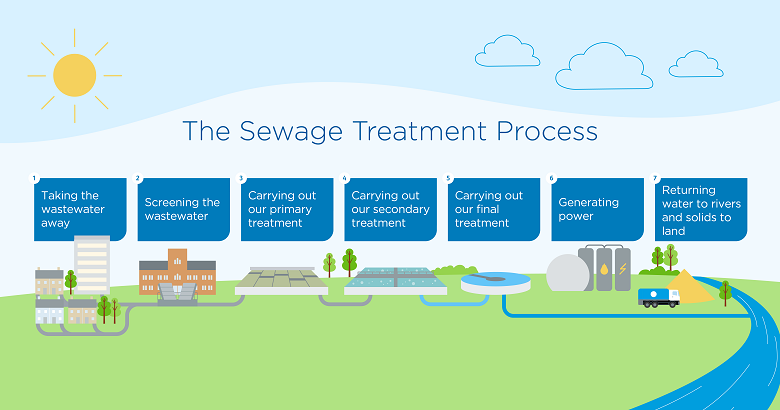Trick Challenges in Urban Waste Water Treatment Methods
Wiki Article
Strategic Approaches to Enhance Drainage Therapy Performance and Reduce Environmental Impact
In the world of waste water therapy, the pursuit for improved effectiveness and minimized ecological impact is a perpetual difficulty that requires strategic remedies. As culture comes to grips with the imperative to take care of water sources sustainably, a nuanced approach comes to be necessary. The assimilation of innovative treatment innovations, energy-efficient processes, resource healing strategies, enhanced nutrient removal techniques, and clever surveillance and control systems represents a multifaceted framework for dealing with these pushing concerns. Nonetheless, what exists at the core of this complicated web of techniques is the prospective to revolutionize the means we come close to waste water therapy, not equally as a process of disposal, yet as a valuable chance for advancement and ecological stewardship.Advanced Therapy Technologies
Cutting-edge membrane layer filtering systems have changed advanced wastewater therapy procedures, considerably enhancing the removal of pollutants. This technology has proven to be extremely efficient in eliminating a large array of impurities, including pharmaceuticals, heavy steels, and natural substances, which are typically challenging to remove with standard therapy methods.Furthermore, membrane layer filtering systems use many benefits over standard therapy methods. Additionally, these systems are very flexible and can be easily integrated right into existing treatment plants or used as standalone units for decentralized applications.
Energy-Efficient Processes
The assimilation of energy-efficient procedures in wastewater therapy systems is essential for optimizing resource utilization and lowering functional expenses. By implementing energy-efficient modern technologies, treatment plants can significantly decrease their carbon footprint and overall ecological impact. One key technique to improving power performance in wastewater treatment is the use of sophisticated oygenation systems, such as fine bubble diffusers or surface area aerators, which can enhance oxygen transfer effectiveness and decrease power intake. Additionally, incorporating energy recovery systems, like anaerobic food digestion for biogas manufacturing or using excess warmth for thermal processes, can help balance out power demands and advertise sustainability.Moreover, maximizing procedure control and automation with the use of sophisticated sensors and keeping an eye on systems can enhance total power efficiency by changing procedures in real-time based upon real need and problems. Applying energy audits and routinely keeping an eye on energy performance signs are important methods to recognize locations for enhancement and track energy-saving efforts efficiently. Overall, the fostering of energy-efficient procedures in wastewater treatment not just benefits the setting however also adds to long-lasting expense savings and operational sustainability.
Source Recovery Techniques
With a focus on optimizing source application and sustainability in wastewater treatment systems, the execution of source healing strategies becomes an essential facet in boosting operational performance. Source healing approaches in wastewater therapy entail the identification and removal of valuable resources from the waste stream, thus turning what was once taken into consideration waste into a valuable possession. By carrying out resource healing techniques such as nutrient elimination and recuperation, power generation from organic issue, and the production of recyclable water, wastewater therapy plants can decrease ecological impact while maximizing effectiveness.
Boosted Nutrient Elimination Strategies
Executing advanced nutrient removal methods is necessary for optimizing the efficiency of wastewater therapy systems. Improved nutrient removal plays a vital role in lessening the environmental impact of treated effluent discharged into water bodies. Among the crucial strategies made use of for boosted nutrient elimination is the process of biological nutrient elimination (BNR), which involves the removal of nitrogen and phosphorus through biological procedures. This can be attained through making use of specialized bacteria that can convert nitrogen substances right into inert nitrogen gas with denitrification, and collect phosphorus within their cells via a procedure called enhanced organic phosphorus removal (EBPR)
In addition to BNR, progressed treatment methods such as membrane bioreactors (MBRs) and created marshes can additionally be utilized to enhance nutrient elimination efficiency. By integrating these innovative nutrient removal methods into wastewater treatment industries, towns and systems can effectively lower nutrient contamination and shield the environment.
Smart Tracking and Control Solution
Utilizing advanced innovation, the combination of clever tracking and control systems transforms the functional efficiency of wastewater treatment centers. These systems include sophisticated sensors and information analytics to constantly keep track check out here of crucial criteria such as pH levels, turbidity, dissolved oxygen, and flow prices in real-time. By gathering and examining this information, drivers can get valuable insights more into the performance of the therapy procedures, making it possible for positive modifications to enhance therapy performance.Smart monitoring and control systems likewise sustain remote tracking capacities, permitting operators to access real-time data and control functions from off-site places. This remote accessibility improves functional adaptability and responsiveness, allowing speedy treatments in instance of system malfunctions or variations in influent high quality. The anticipating upkeep capabilities of these systems help prevent tools failures and minimize downtime, ultimately enhancing the total reliability of wastewater therapy procedures.
Final Thought
Finally, critical methods such as sophisticated therapy modern technologies, energy-efficient procedures, source recuperation methods, boosted nutrient elimination methods, and wise monitoring and control systems play a vital function in boosting wastewater therapy efficiency and reducing ecological effect. By implementing these strategies, wastewater therapy plants can boost their total efficiency, minimize power intake, recoup important sources, and make certain compliance with environmental laws. These techniques are crucial for effective and sustainable wastewater management techniques.In verdict, strategic techniques such as innovative therapy technologies, energy-efficient processes, resource recovery methods, enhanced nutrient elimination methods, and clever surveillance and control systems play an important role in improving wastewater therapy effectiveness and reducing environmental influence.
Report this wiki page